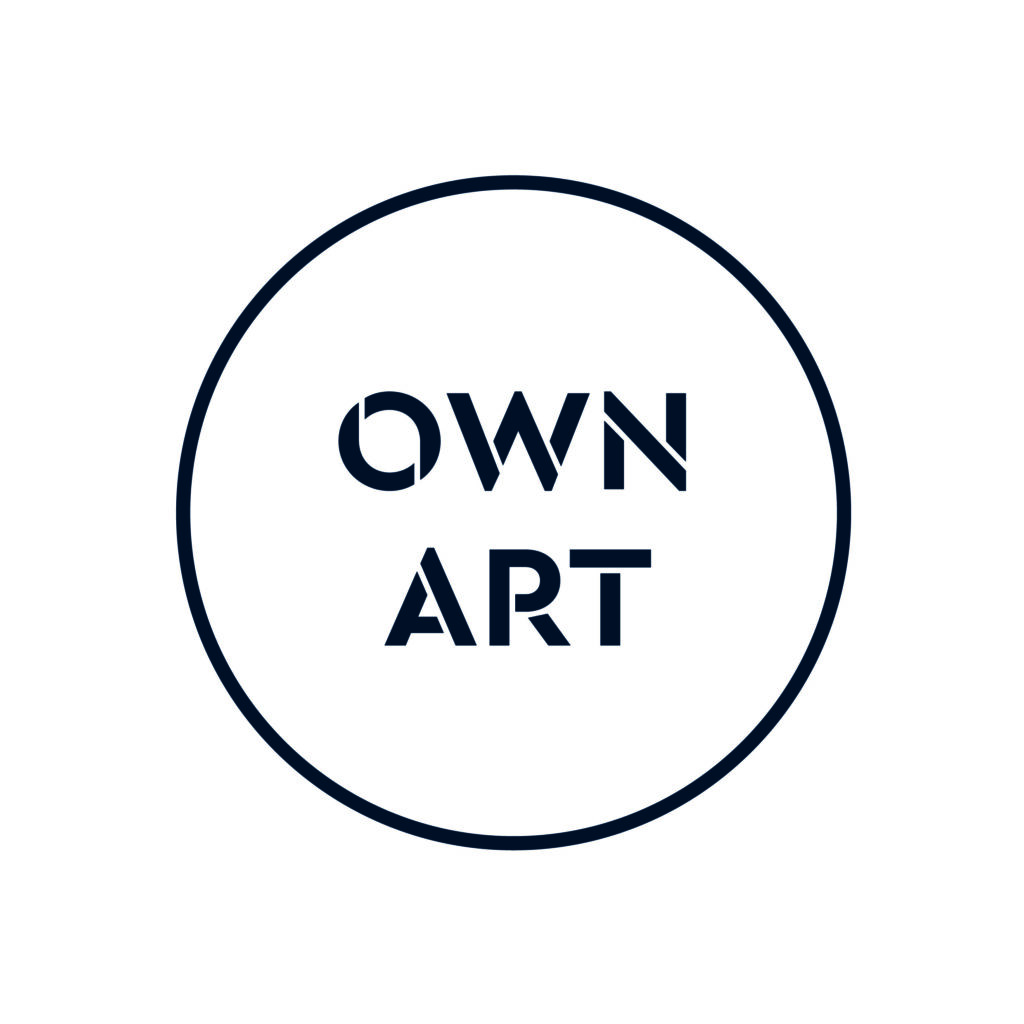Thomas Haskett Artist Interview
Thomas Haskett was born in Kent, and studied at Canterbury College of Art, and then at Falmouth School of Art. In the early part of his career he worked as an illustrator in Cornwall before establishing himself as a painter in Pembrokeshire almost a decade ago. Whilst working initially in watercolours and inks, he now works mostly in oils.His primary objective is recording the various qualities and varieties of light along the coastlines, hills and mountains of Wales, and thus distilling a sense of place and of time.
Most of his work is produced on location, using boards prepared with his own gesso. His oils paints are also handmade, and all of his frames are hand finished.
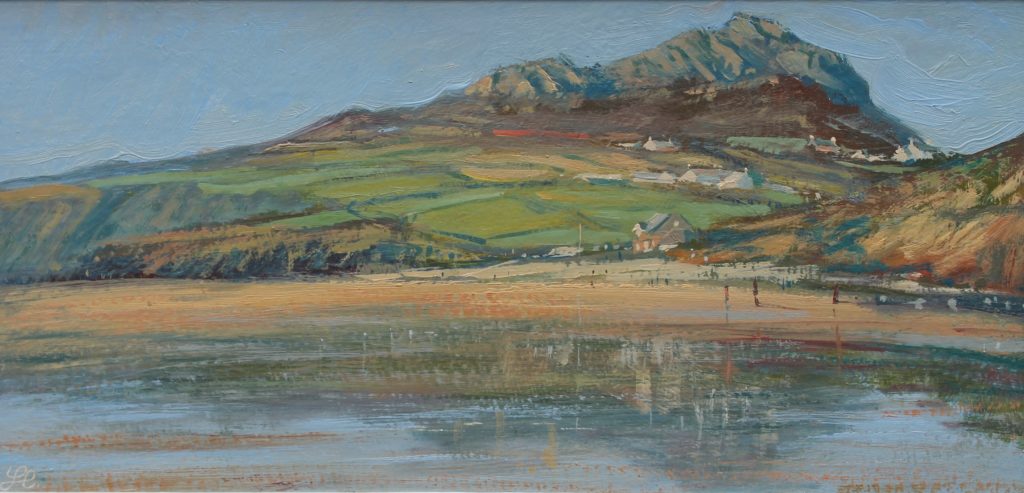
here is our interview with Thomas – done during the first lockdown in April.
∙ Where do you get most of your inspiration?
Mostly from being out and about along the coastline, so I’m very much missing that at the moment!
∙ Do you prefer to work outside/in your studio/a mixture of both?
The vast majority of my work is completed outside, but I do enjoy studio days where I plan paintings and prepare surfaces to paint on etc.
∙ Do you have a favourite painting that you have done? If so which one? (please include an image if so!)
I’ve got a tiny little oil sketch from Caerfai looking back across the sea to the cliffs between Newgale and Broadhaven, it’s actually one of my wife’s favourite paintings, so I’m not allowed to sell it!

∙ Where/ or what is your favourite place/subject to paint?
Probably the whole stretch of coast from St Davids to Strumble Head, I just love the rocky outcrops, multiple headlands and little coves and cottages.
∙ How do you find titles for your paintings, does the idea come before or after?
I tend to think of my titles as being labels to identify the location that I’ve painted, and perhaps the time of day, or the season. My work is quite representational, so I feel my titles should reflect this, I also quite like the viewer to form their own narrative about the painting, so I quite like my titles to be non-prescriptive, and not to hinder the that process.
∙ Who’s your favourite artist/artists?
I love so many different painters, I couldn’t list them all. Locally, I really like Gareth Thomas’ acrylics, Claudia Williams’ figurative work, Aneurin Jones’ Welsh Cobs, Matthew Wood’s interior scenes, David Tress, Donald McIntyre, Kyffin Williams, Augustus and Gwen John, John Kanpp-Fisher.
Nationally, there are so many people that I really admire, so in no particular order, here are just a few; Andrew Tozer, Stanhope Forbes, Fred Cuming, Arnesby Brown, Lucy kemp Welch, Ken Howard, Alfred Munnings, Henry Scott Tuke, James MacKeown, Walter Langley, Edward Seago, John Piper, Hockney, Euan Uglow, Henry Scott Tuke, Peter Lanyon, Kurt Jackson, Laura Knight, William Morris etc
∙ Which is the favourite piece of art by another Artist that you own?
I have a painting of the Helford by Andrew Tozer. I used to live in Cornwall, and I absolutely loved the Heleford river, and Andrew’s work. It was a present from my wife, so it’s a much-cherished painting, for many reasons.
∙ Do you listen to music while you paint? If so what kind of music?
I often listen to the radio, or to podcasts, or audio books when I paint. If there’s a good play on, then I can get totally lost in my work, and paint for hours without stopping or noticing. I can almost always remember what I was listening to when I see an old painting of mine!
∙ What could you not do without in your studio?
Probably something to paint, or draw on. If I run out of panels, I do tend to paint over existing paintings! I am actually quite worried about running out of materials, paints in particular as I do get through quite a bit when I work.
∙ What does your studio space look like?
Because almost all of my work is done outside, the amount of studio space I require is actually very small. I do have a little workshop where I make frames, but this also doubles as somewhere to store all my surfboards!
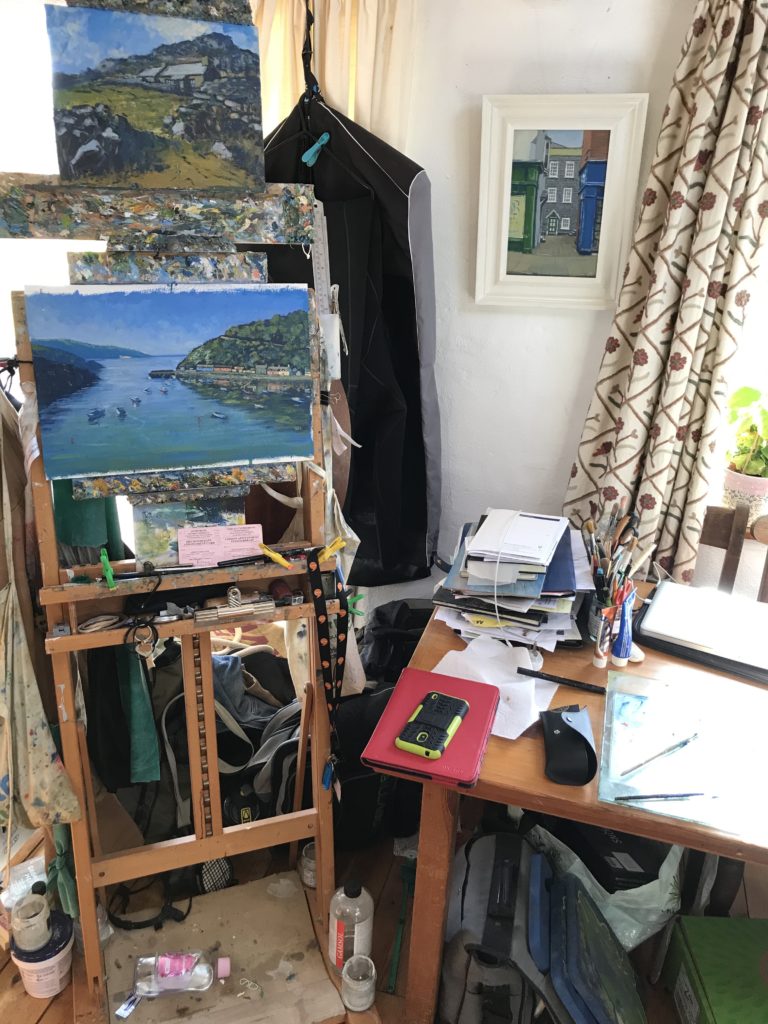
inside studio space
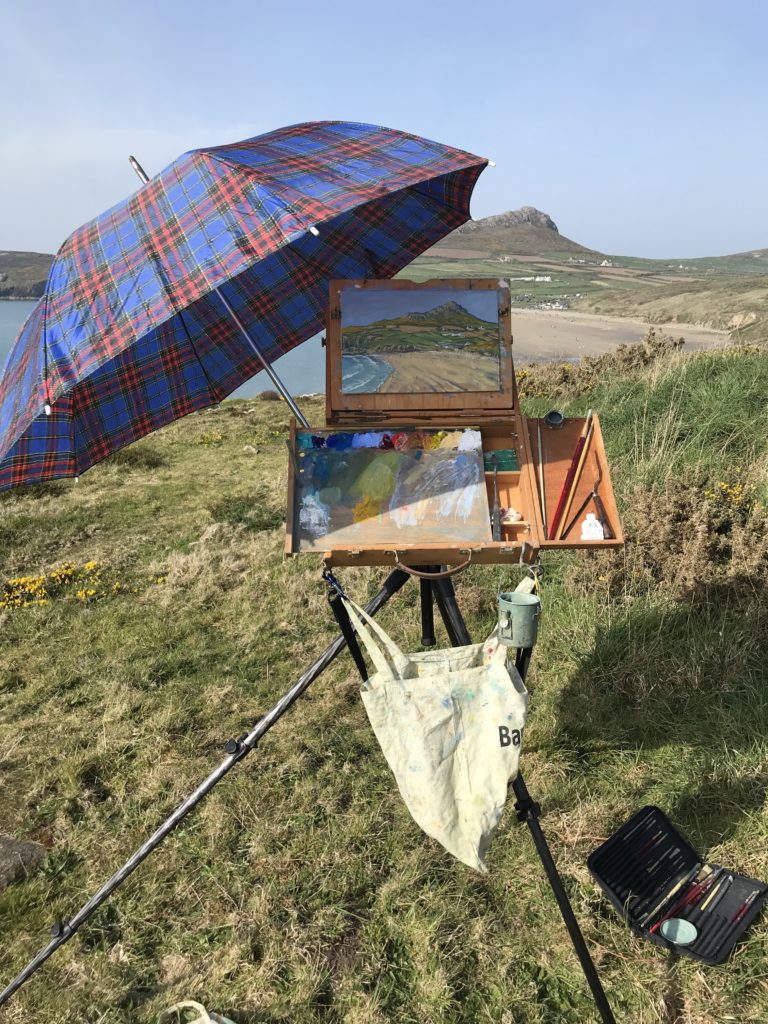
outside studio
∙ How do you feel your work has changed over the years?
I studied illustration at University, and I think because of that, my earlier work was tighter and more detailed. I think my work has probably become looser and more energetic now. I think it’s more expressive, but hopefully still true to the location.

∙ Is there a particular time/place or movement you feel influenced you the most?
I think in terms of methodology, it would have to be the early impressionists. When paint was able to be stored in tubes and thus became portable, it changed the way that artists worked, and the same is true for me when I realised that I preferred being, and working outside.
∙ What other work have you done apart from being an Artist?
I work one day a week for a volunteer centre, and due to the current crisis, we’re absolutely inundated with people offering their help and volunteering to support others during the lockdown. It’s very busy, but very encouraging to know how people will pull together to help the most vulnerable during this worrying time.
∙ What is the best thing about being an artist for you?
Having the freedom to do what I love, to follow my interest and being able to create work that I care about is such an important and fundamental thing to me.
I have a definite compulsion to create images, and it’s hugely satisfying (when it goes right!). I also find it quite frustrating if I can’t paint or draw for any reason.

∙ Did you always know you wanted to be an artist?
Yes – I’ve always been painting and drawing for as long as I’ve been able to hold a pencil, or paintbrush. I don’t think that I could ever be anything else!
∙ What sort of painting are you working on at the moment?
I’m working from little drawings that I’ve made in my sketchbooks, and also making little studies of the landscape around where I live. We’re lucky to have quite a few footpaths to walk along here, and it’s very isolated, so it’s safe to work outside near to where I live.
∙ Can you show us some images from your sketchbook? Recent sketches and a finished piece maybe?
I’ll attach some images, but my sketchbooks tend to be almost a private space where I work out ideas, jot down information, and just draw for the pleasure of drawing. They’re never really intended for show, and as such there’s no pressure to get things right, so it’s quite a freeing exercise to work in them.

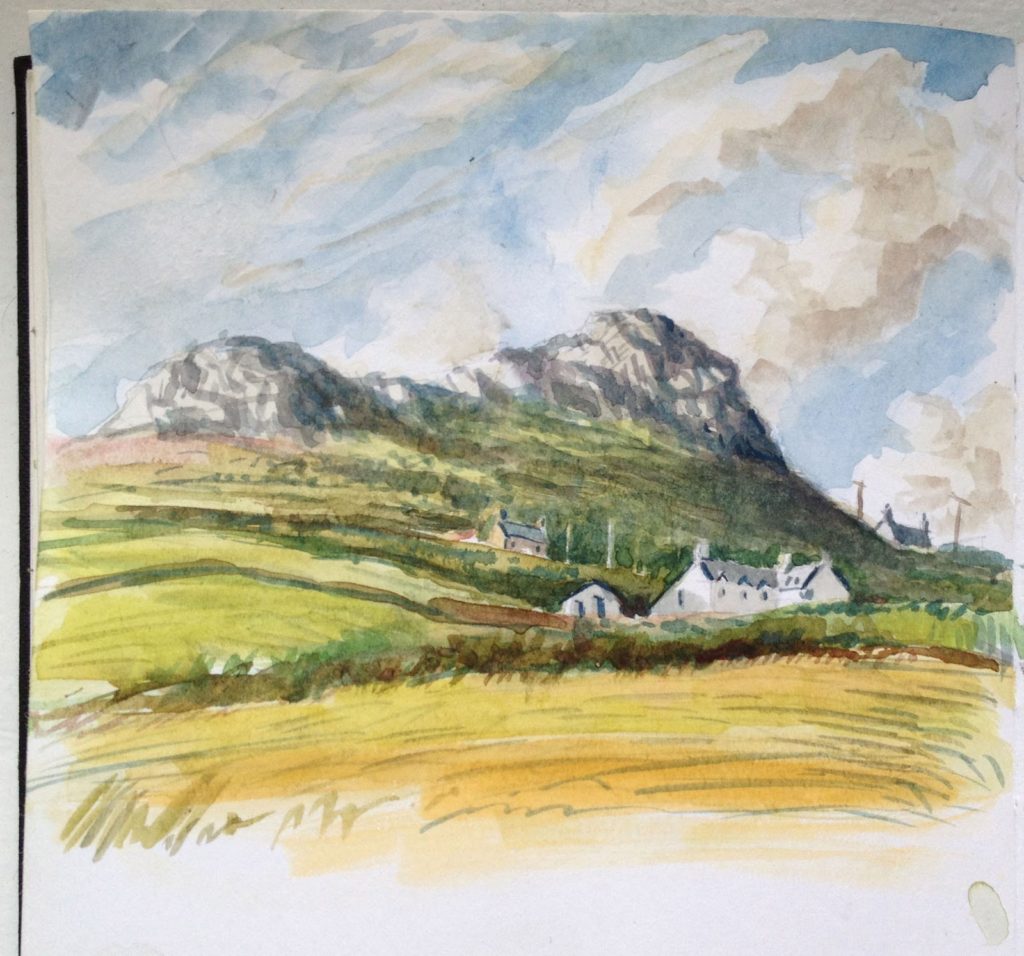
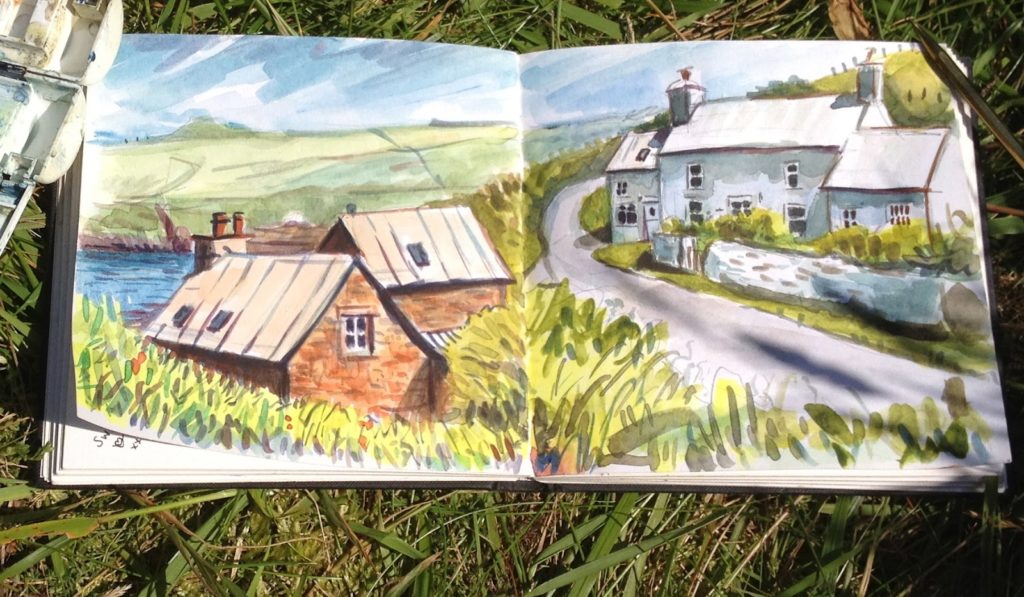
∙ What is your favourite medium to work in and why?
Probably watercolours as they’re the least messy, they’re easy to carry, and quick to clear away. I tend to use them to sketch, and work ideas through. Gouache is quite fun as you can use it very thinly, or apply it in a much thicker way. It tends to dry reasonably quickly so you can get lots of information down fairly rapidly.
